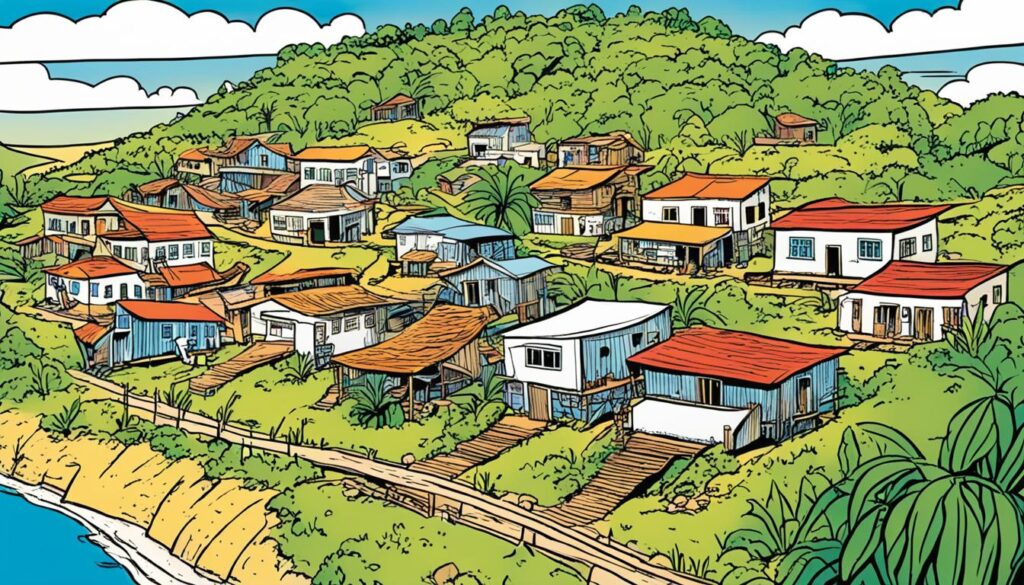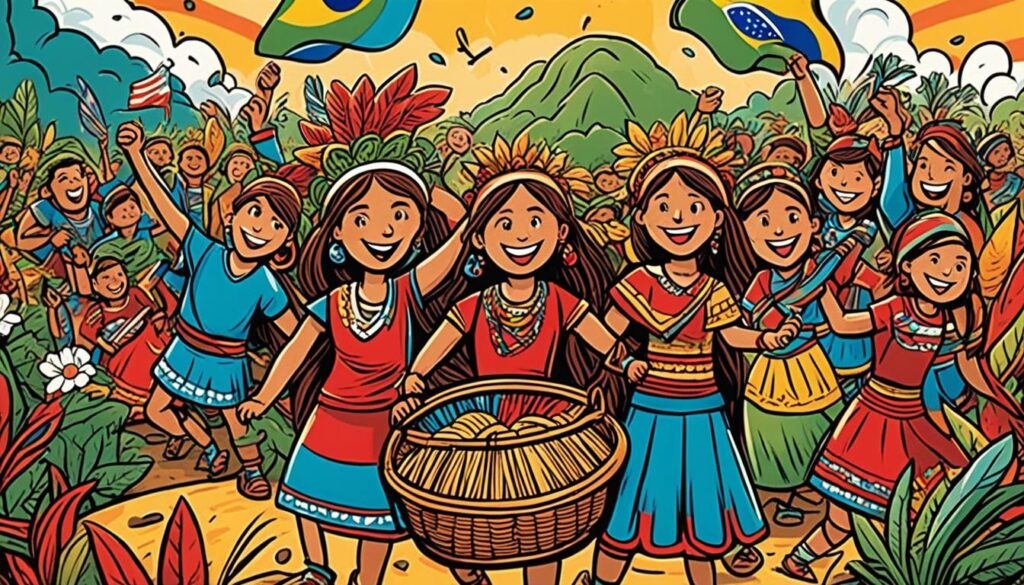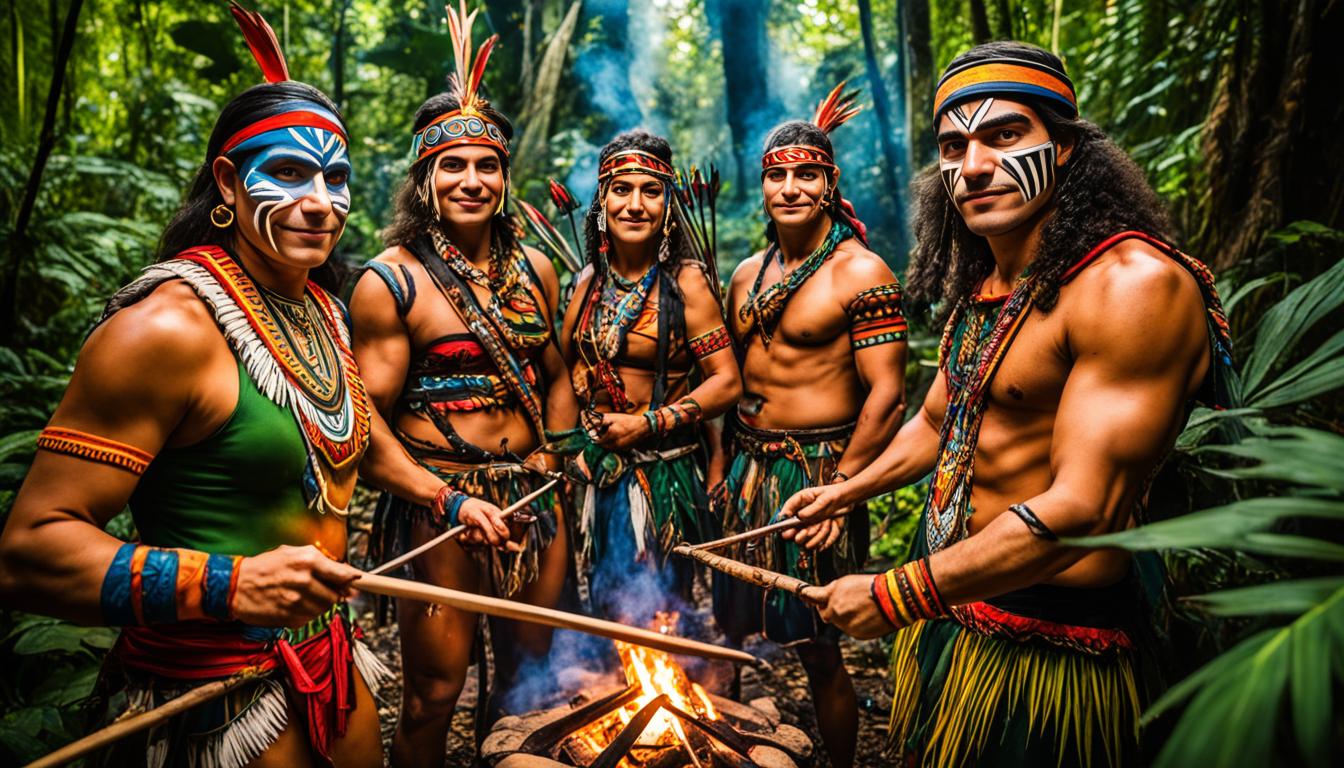Did you know that the Trió Language, also known as Tiriyó, is spoken by approximately 3,640 individuals across Brazil, Suriname, and Guyana? This unique Carib language boasts complex verb morphology and follows the OVS word order, making it a fascinating linguistic typology to explore. If you’re eager to expand your language fluency and acquire multilingual skills, the Trió Language offers a world of learning opportunities through online language courses and language classes provided by various language learning platforms. Dive into the rich linguistic heritage and cultural significance of the Tiriyó people by embracing the Trió Language and unlocking a wealth of knowledge and connection.
History and Cultural Significance of the Tiriyó People
The Tiriyó people, descendants of various indigenous communities, have a rich history dating back to the early 17th century. They have inhabited the border region between Brazil and French Guiana, maintaining contact with different groups, including runaway slave communities such as the Ndyuka.
With a profound connection to their heritage, the Tiriyó people possess unique cultural traditions and practices that are integral to their identity. These customs have been passed down through generations, serving as a testament to their enduring cultural resilience.
Central to the Tiriyó people’s way of life is their affiliation with indigenous religions. Approximately 70% of the Tiriyó population practices indigenous religions, while the remaining 30% identify as Christians. Catholicism is more prevalent among the Tiriyó in Brazil, while Protestantism holds prominence in Suriname.
“Our cultural traditions and practices form the cornerstone of our identity as Tiriyó people. Our indigenous religions allow us to maintain a profound connection with our ancestral spirits and the natural world around us. We strive to preserve and protect our cultural heritage for future generations.”
Through their adherence to indigenous religions, the Tiriyó people celebrate an intricate relationship with the spiritual realm and the preservation of their natural surroundings. This connection facilitates a deep understanding of their ancestral lineage and the significance of their cultural practices.
In essence, the Tiriyó people’s history and cultural traditions are inseparable from their indigenous religions. This integration creates a cohesive cultural tapestry, reinforcing their collective identity and sustaining the essence of their heritage.
By preserving their unique cultural traditions and embracing the significance of their indigenous religions, the Tiriyó people ensure the continuity of their identity and the protection of their cultural heritage.
Language Features and Linguistic Research of Tiriyó
The Tiriyó language, classified as a member of the Cariban language family, has been the subject of extensive linguistic research and analysis. Prominent linguists Sergio Meira and Eithne Carlin have dedicated their efforts to studying the phonology, morphology, syntax, and semantics of the Tiriyó language. Through their meticulous studies, comprehensive dictionaries and descriptive grammars have been developed, shedding light on the unique features and structural characteristics of Tiriyó.
Tiriyó language encompasses a fascinating phonological system with distinctive speech sounds and their organization. Linguists have meticulously documented these sounds and their patterns, enabling scholars to delve deeper into the intricacies of Tiriyó pronunciation.
Furthermore, the morphology of Tiriyó is characterized by its agglutinative nature, where words are formed by combining individual morphemes that convey meaning. Such a complex system allows for precise expression and extensive variation in the language.
The syntax of Tiriyó follows the OVS (Object-Verb-Subject) word order, setting it apart from many other languages. This distinctive structure impacts the communication style and conveys underlying cultural nuances.
The semantics of Tiriyó, which deals with the meaning and interpretation of words, phrases, and sentences, holds great significance in understanding the language and its cultural context. Researchers analyze the semantic relationships within Tiriyó and explore how these structures shape its speakers’ worldview.
Linguistic studies on Tiriyó have greatly contributed to the documentation and preservation of indigenous languages in the region. By unraveling the intricacies of Tiriyó, researchers and linguists have not only deepened our understanding of this unique language but also fostered cultural appreciation and respect.
Comparative Analysis of Tiriyó Phonemes
| Phoneme | Example | Translation |
|---|---|---|
| /p/ | napë | water |
| /k/ | kësi | sun |
| /s/ | sëkë | fire |
| /h/ | hëri | mountain |
“The phonological intricacies of Tiriyó provide invaluable insights into the unique characteristics of this fascinating language.” – Sergio Meira
Tiriyó Settlements and Government
The Tiriyó people inhabit various major villages and minor settlements in the border zone between Brazil and Suriname. These communities, including Kwamalasamutu and Alalapadu, have well-established village structures and their own internal governmental systems. The management of these villages is overseen by appointed captains and chiefs, who ensure the smooth functioning of the community and address the needs of the villagers.
Tiriyó Village Communities
The Tiriyó settlements are characterized by their close-knit village communities, where social cohesion and collective decision-making play vital roles. These communities embrace their traditional way of life while adapting to the changes brought about by increased interaction with the outside world. The villages serve as cultural anchors, preserving the indigenous heritage of the Tiriyó people and fostering a sense of belonging and identity.
“Our village communities are the heart and soul of our existence. They provide us with a strong support system and a deep connection to our ancestral lands and traditions.” – Tiriyó Elder
The village communities are not only responsible for governance but also serve as centers for various activities, such as cultural events, ceremonies, and educational programs. They contribute to the preservation and transmission of Tiriyó language, customs, and indigenous knowledge from one generation to another, ensuring the continuity of their rich cultural heritage.
Governmental Structure
The governmental structure of Tiriyó settlements is designed to meet the specific needs of the community and maintain a harmonious balance. Each village is led by a captain, who is responsible for the day-to-day administration and decision-making. The captain is supported by a team of trusted individuals, including chiefs and council members, who assist in governance and community affairs.
The role of the captain and chiefs extends beyond administrative tasks; they also act as custodians of the Tiriyó traditions and values. Their knowledge and experience are highly respected within the community, and they play a crucial role in resolving conflicts, preserving cultural practices, and representing the interests of the Tiriyó people to external entities.
Governance in Practice
The governmental structure in Tiriyó settlements combines an amalgamation of traditional leadership and contemporary governance practices. This unique blend allows for the preservation of indigenous identity and autonomy while enabling the community to adapt to modern challenges.
Strong emphasis is placed on consensus-building and ensuring the participation of all members in the decision-making process. Regular community assemblies, known as “hamansądya,” serve as platforms for discussions, deliberations, and the exchange of ideas. These assemblies provide an opportunity for individuals to voice their opinions, contribute to the development of the community, and collectively shape the future of Tiriyó settlements.
Tiriyó Settlements and Government: A Table Overview
| Tiriyó Settlement | Captain | Chiefs |
|---|---|---|
| Kwamalasamutu | Antonio Da Silva | Julio Lopez, Maria Soares |
| Alalapadu | Francisco Balbino | Manuel da Costa, Ana Mendes |
| Kayodé | Jorge Fernandes | Carlos Sousa, Isabel Rodrigues |
| Apalakiki | Lucas Oliveira | Rita Costa, Pedro Fernandes |
Table 4: Tiriyó Settlements and their respective Captains and Chiefs.
The table above provides an overview of some notable Tiriyó settlements, along with the names of the captains and chiefs. These individuals play vital roles in maintaining the social fabric and overseeing the governance of their respective communities.
It is through these settlement structures and their governmental systems that the Tiriyó people safeguard their community, preserve their cultural heritage, and ensure the well-being of their villagers.

Indigenous Rights and Challenges Faced by the Tiriyó People
The Tiriyó people face numerous challenges in their ongoing efforts to preserve their indigenous rights and cultural heritage. As a community spread across three countries, coordination and advocacy for their rights can be challenging.
One of the major challenges faced by the Tiriyó people is the issue of mining concessions and economic interests that often disregard the rights and interests of indigenous populations. These mining concessions can lead to conflicts and potentially result in the loss of ancestral lands that hold significant cultural and historical importance for the Tiriyó people.
However, despite these challenges, indigenous organizations and local leaders are working tirelessly to protect and preserve Tiriyó cultural traditions. These efforts aim to ensure that the voices of the Tiriyó people are heard and respected in decision-making processes that directly impact their lives and communities.
“Preserving our cultural heritage is not merely a matter of pride; it is essential for the survival and well-being of our community. Our ancestral lands and cultural practices are deeply intertwined, and by fighting for our rights, we are also fighting for the preservation of our identity as Tiriyó people.” – Chief Arawai
Through their advocacy work and dedication to cultural preservation, the Tiriyó people are striving to maintain their way of life while navigating the challenges posed by external forces. These efforts not only contribute to the preservation of Tiriyó indigenous rights, but also serve as a testament to the resilience and strength of the Tiriyó community.
Tiriyó Cultural Preservation Initiatives
To safeguard their cultural heritage, the Tiriyó people have implemented various initiatives to promote cultural preservation and awareness. These initiatives encompass:
- Traditional storytelling and oral history programs
- Community-led language revitalization projects
- Arts and crafts exhibitions to showcase traditional creative expressions
- Establishment and support of cultural centers and museums
These initiatives play a vital role in not only preserving the unique cultural practices and traditions of the Tiriyó people but also in fostering a sense of pride and identity within the community. By actively engaging in cultural preservation efforts, the Tiriyó people are creating opportunities for future generations to connect with their roots and carry forward their cultural legacy.
Tiriyó Language and Cultural Revitalization Efforts
Recognizing the importance of language preservation, there have been initiatives to revitalize and promote the Tiriyó language. These efforts aim to ensure the language and cultural heritage of the Tiriyó people are passed down to future generations. Language revitalization programs, cultural events, and educational initiatives play a vital role in achieving this goal.
Language revitalization programs provide opportunities for Tiriyó individuals to learn and engage with their native language. These programs offer language classes, workshops, and online resources that focus on teaching Tiriyó vocabulary, grammar, and conversational skills. By actively participating in these programs, community members can improve their language fluency and foster a deeper connection with their cultural identity.
Cultural events also play a significant role in Tiriyó language revitalization efforts. These events provide platforms for community members to showcase their cultural traditions, including their language. Traditional storytelling, music performances, and cultural exhibitions encourage the use and appreciation of the Tiriyó language among both the younger and older generations.
Educational initiatives form another crucial aspect of Tiriyó language revitalization. Incorporating the Tiriyó language into formal education systems ensures that younger generations have the opportunity to learn and develop proficiency in their native language. By integrating the Tiriyó language into schools and educational curricula, cultural programs can create a nurturing environment for language preservation and promote intergenerational language transmission.
Through these revitalization efforts, the Tiriyó community strengthens their cultural identity and fosters a sense of pride in their language. Additionally, these initiatives contribute to the overall preservation of indigenous languages and cultures in the region, emphasizing the importance of linguistic diversity and cultural heritage.
Tiriyó Language and Cultural Revitalization Efforts
| Initiative | Description |
|---|---|
| Language Revitalization Programs | Offer language classes, workshops, and online resources to promote Tiriyó language learning and fluency. |
| Cultural Events | Organize traditional storytelling, music performances, and cultural exhibitions to celebrate Tiriyó language and cultural heritage. |
| Educational Initiatives | Integrate the Tiriyó language into formal education systems and curricula to ensure language preservation and transmission to younger generations. |

Language revitalization is not just about preserving words; it’s about preserving identities, worldviews, and cultural heritage. By revitalizing the Tiriyó language, we ensure the survival and flourishing of the Tiriyó community’s rich linguistic and cultural traditions.
Conclusion
The Trió Language, spoken by the Tiriyó people of Brazil, Suriname, and Guyana, represents a unique and culturally significant aspect of the indigenous community’s heritage. Language learning platforms and online language courses provide individuals with valuable opportunities to engage with the Trió Language, enhancing their language fluency and understanding of this fascinating linguistic tradition.
However, it is essential to recognize and respect the cultural heritage and rights of the Tiriyó people. Language revitalization efforts and initiatives aimed at preserving indigenous languages and traditions are crucial in safeguarding the Trió Language and ensuring the voices and identities of the Tiriyó people are preserved.
By valuing and actively embracing the Trió Language, we contribute not only to the protection and revitalization of the Tiriyó cultural heritage but also to the larger goal of preserving linguistic diversity worldwide. Supporting the Trió Language and advocating for indigenous rights go hand in hand, and together, we can create a more inclusive and respectful world for all.
FAQ
What is Trió Language?
Trió Language, also known as Tiriyó, is a Carib language spoken by the Tiriyó people native to Brazil, Suriname, and Guyana.
Are there online language courses available for Trió Language?
Yes, there are language learning platforms that offer online language courses and classes for Trió Language.
How can online language courses help improve my language fluency?
Online language courses provide individuals with the opportunity to engage with Trió Language and enhance their language fluency and multilingual skills.
What is the cultural significance of the Tiriyó people?
The Tiriyó people have unique cultural traditions and practices, with a strong connection to their indigenous religions.
How have linguists studied the Tiriyó language?
Linguists such as Sergio Meira and Eithne Carlin have conducted extensive studies on the phonology, morphology, syntax, and semantics of the Tiriyó language.
Where do the Tiriyó people reside?
The Tiriyó people reside in major villages and minor settlements located in the border zone between Brazil and Suriname.
What are the challenges faced by the Tiriyó people?
The Tiriyó people face challenges in preserving their indigenous rights and cultural heritage, such as mining concessions and economic interests that often disregard their rights and interests.
What efforts are being made to revitalize the Tiriyó language?
There are language revitalization programs, cultural events, and educational initiatives being implemented to ensure the preservation of the Tiriyó language and cultural heritage.
